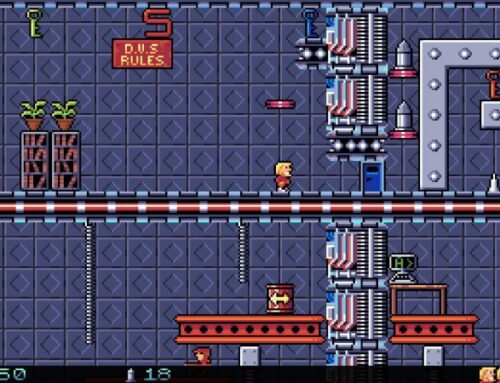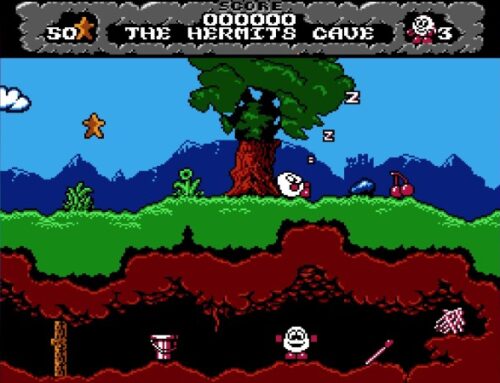It’s kind of surprising that there aren’t more firefighting games out there. After all, a big appeal element of video games is the ability to put ourselves into dangerous, heroic situations that it would be impractical or undesirable to experience in reality. And a disaster such as a fire is something that we can all relate to — while most of us (hopefully) haven’t experienced it ourselves, is something that probably all of us have feared at one point or another.
The Ignition Factor, a 1994 Super NES game from Jaleco (also available via Nintendo Switch Online and as part of the Jaleco Collection 1 cartridge for Evercade) is a game that plants us squarely in boots of a heroic firefighter, tasked with rescuing people from a series of flaming disasters and seeing if there’s any additional do-gooding it’s possible to participate in along the way.

Each mission begins with a briefing, which gives you a not terribly helpful overview map of the building you’re about to enter, as well as a little bit of background information about said building. From this, you can make a few decisions about what equipment you might want to bring with you — when heading for a clothing company that handles a lot of chemicals, for example, you’ll probably want to ensure you bring a chemical fire extinguisher with you.
Equipment choice is important, because the more you carry, the less agile you are; initially, you’ll be unable to jump, kick or run, and at maximum encumbrance even your normal walking speed will be slowed, so it pays to only carry what you really need at any given situation. Thankfully, as you explore the various missions, several of your colleagues are on hand, and are able to take unneeded equipment off your hands, provide you with new items and replenish equipment that has a limited number of uses.
The game controls rather like its stablemate Operation Logic Bomb in that it’s possible to lock your position or direction of facing while moving around using the shoulder buttons, and these features are very useful when it comes to dealing with the fires spreading throughout the mission maps. You’re under no obligation to completely clear out the fires, mind you — and indeed with the tight time limits for each mission, you simply can’t — but it is helpful to have a good degree of control over your character while attempting to clear a path to your next destination.

That said, there is one little niggle with the controls, which is your character’s ability to run. Ostensibly, this is triggered by double-tapping a direction, but it also occurs if you’re already walking, release the direction for a moment and press it again. And the trouble with running is that you don’t stop when you let go, only when you attempt to change direction — this can mean accidentally running headlong into fire and hurting yourself unintentionally when all you were trying to do was manoeuvre through a narrow gap.
Thankfully the game provides a certain amount of margin for error. Your firefighter has a health meter which can be extended by performing well in the missions; the time limits, although seemingly quite tight at first, are plenty to achieve what needs to be done; and most missions contain more survivors than your “quota” for clearing the level, so if you do make some terrible mistakes along the way, you can usually still make it through the mission. Just don’t tell the family why Daddy isn’t coming home for Christmas this year.
This latter aspect is especially important, because many of the survivors are complete dumbasses, blindly wandering into raging infernos and catching fire at a moment’s notice. Thankfully, most of them can take a few “hits” before expiring; as you learn the levels, you’ll get to know which survivors are the most “at risk” from the outset!

Where The Ignition Factor shines is in its more adventure game-esque elements; the game as a whole certainly looks and feels like an action game, but playing it most effectively involves paying attention to the things that people are saying, rigorously searching each level for hidden items and, at times, making use of creative solutions to problems in front of you.
For example, in one of the two opening stages, there’s a survivor you need to rescue who is perched perilously onto a skylight leading to the floor below. Step onto the skylight and your combined weight will cause it to break, killing the survivor and injuring you. Reach out with a stick and, likewise, you’ll break the skylight, as the stick is intended for probing areas of floor to see if any are unstable. What you actually need to do is either give the survivor a swift kick up the botty to force him off the skylight — though with how close you need to get to the glass, this can be dangerous — or throw a carbon dioxide bomb (usually used for clearing large areas of fire) at him to “blow” him off the skylight.
You have to be careful not to cause more problems with your creative solutions, too, though; in a level set in a gas-flooded mine, one survivor is caught behind a rock fall. No problem, you think, just set up some plastic explosives and blow your way through — except if the survivor is too near the blast while he wanders around in a daze, he gets caught in it and dies. Whoops. Better be a bit more careful with the timing next time.

The fact the game makes an effort to provide a feeling of context and personality to what is going on is impressive and noteworthy for a 16-bit console game, too. While there’s no deep soul-searching or tragic backstories to the team of firefighters, you do start to get a feel for who they are as you progress through the missions with them — and the imaginative settings of the levels are a consistent joy, too, with the level set in an interactive dinosaur museum (complete with a jungle rapids ride) is a particular delight.
Again, though, there’s a minor niggle here that stems from the generally poor quality of Japanese localisations in this era of gaming — certain bits of dialogue are so poorly translated that the English script says the exact opposite of what the original Japanese text would have said, with probably the most noteworthy instance being the time you interact with a computer to unlock an electronic door, only to be informed that “this door is now locked”. (It isn’t; the text is just wrong.)
These minor issues aside — both of which can easily be overlooked and dealt with after getting a little more familiar with the game — The Ignition Factor is a great game that presents a stiff challenge and plenty of replayability. The game’s timer system challenges you to speedrun its levels, and the scoring system tasks you with tracking down hidden items and events found around each stage. Beating the game is just the beginning; in order to play the final “secret” stage, you’ll need a high enough score — and that’s probably going to take you a few attempts.

Thankfully, the original Super NES version features an excellent password system that saves not only your progress, but also your number of continues and points, and when played on other platforms such as Switch and Evercade you can, of course, simply save your game at any time.
Jaleco made a variety of interesting games throughout this era of gaming — and The Ignition Factor is, without a doubt, one of the most intriguing. It has its little flaws here and there — and its initial difficulty level may put some off almost right away — but it’s absolutely a hidden gem of the Super NES’ library, and definitely worth spending some time with if you get the opportunity.
Screenshots from the Evercade version.




